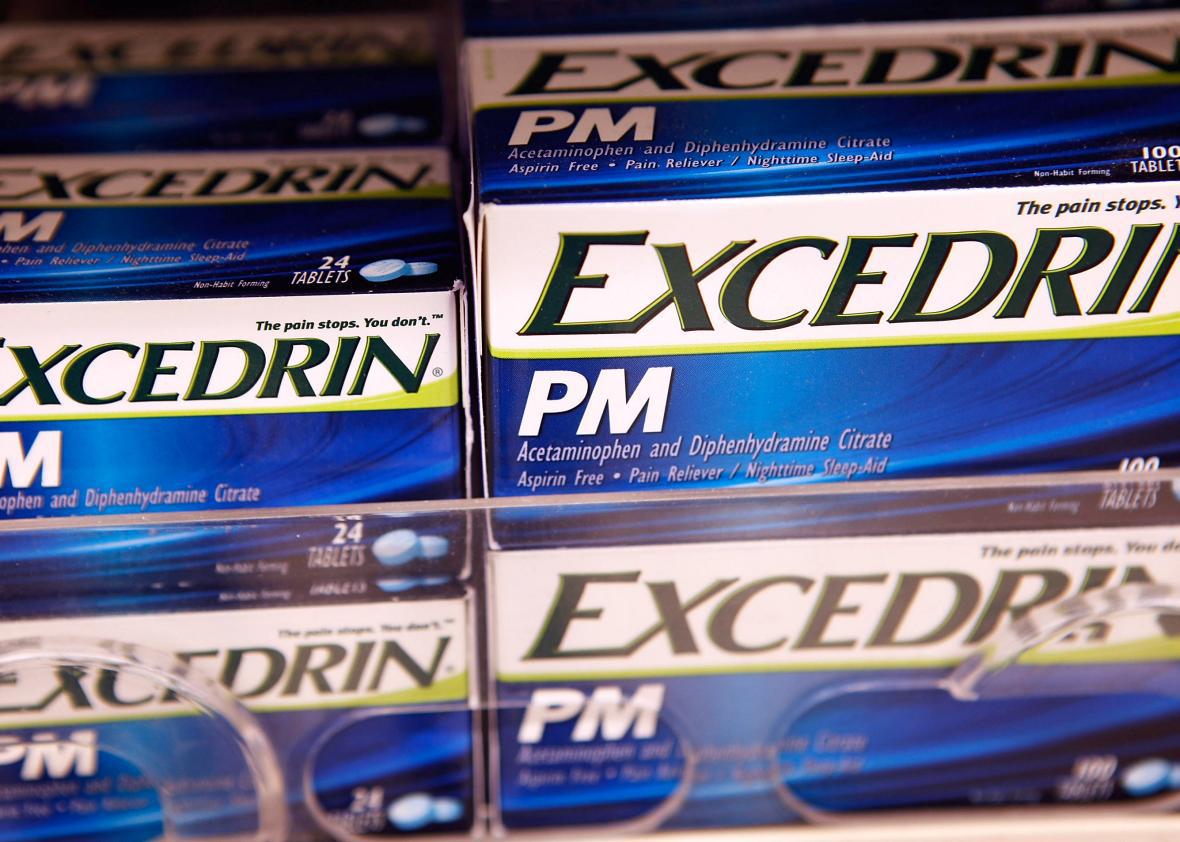Virtual reality has been hailed as an “empathy machine” for its ability to foment understanding by transporting people to worlds and experiences that differ from their own. The technology has also been criticized for inducing headaches and nausea.
Kudos to the creative minds at Excedrin, then, for putting two and two together in the form of “The Migraine Experience,” an augmented-reality simulator designed to, well, give people headaches—but in the name of empathy. The goal, according to Excedrin’s website: “Harnessing the power of augmented reality to bring true empathy to migraine sufferers.”
Excedrin’s simulator doesn’t actually give you a migraine, of course. It just mimics some common symptoms, such as “sensitivity to light and sound, disorientation, and aura.” Apparently, “experiencing is believing,” as Excedrin brand manager Scott Yacovino put it in a statement to Vice. Unfortunately, no app can adequately convey what it’s really like to have migraines, says Vice writer and migraine sufferer Sarah Emerson, who suggested Excedrin’s time and money might have been better spent developing treatments that actually work.
Nonetheless, the marketing campaign seems to be resonating. The YouTube video above has racked up more than 400,000 views, and a Huffington Post article about it has been shared more than 83,000 times.
That got us thinking: What other unpleasant experiences might we all better understand via virtual reality simulations?
The Kidney Stone Experience: You’ve heard people kvetch about the searing pain involved in passing a rock the size of a ping-pong ball through their urinary tract, but you always sort of assumed they were exaggerating. Until now.
The Toothache Experience: This agonizing virtual reality software might actually make people care enough to do something about the appalling lack of access to dentistry for America’s poor. Or just take off the headset and go do something else. Up to you!
The Athlete’s Foot Experience: In this top-grossing app developed by Tinactin, the virtual flames that shoot from between your toes can be relieved only by the in-app purchase of a virtual spray bottle.
The Endometriosis Experience: This sequel to the smash hit Menstruation Experience gives everyone the opportunity to feel something previously reserved for a select 10 to 20 percent of women: Namely, what it’s like to have your uterine lining growing in the wrong place.
The Measles Experience: Elevates your body temperature, infects your eyes, and leaves you with an ominous rash. Still think your kids don’t need to get vaccinated, hippie?
The Pregnancy Experience: “Third Trimester Mode” adds 30 pounds, gives you restless legs, and compels you to pee every 37 minutes. But don’t underestimate “First Trimester Mode,” in which you feel like you’re about to simultaneously vomit and keel over from exhaustion, and yet you look perfectly normal and no one will give you their seat on the subway.
The Crabs Experience: Sure to be a hit in junior-high sex ed classes.
The Ennui Experience: Lots of things happen in this simulator that probably should interest you, but don’t.
The Virtual Reality Experience: The weight of the bulky goggles on your nose. The slight vertigo of imperfectly aligned stereoscopic images. All the sensations of VR made real through the magic of virtual reality.
The Excedrin Creative Director Experience: Sure, it’s easy to make fun of the people who came up with this PR campaign. But have you ever actually been in a boardroom where you’re forced to come up with a fresh way to market a 57-year-old pain reliever that’s essentially just Tylenol mixed with aspirin and caffeine?
Gabriel Roth and Katy Waldman contributed to this article.
